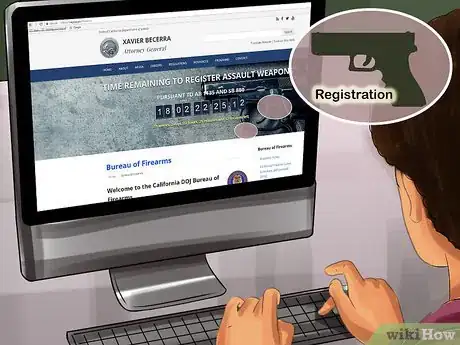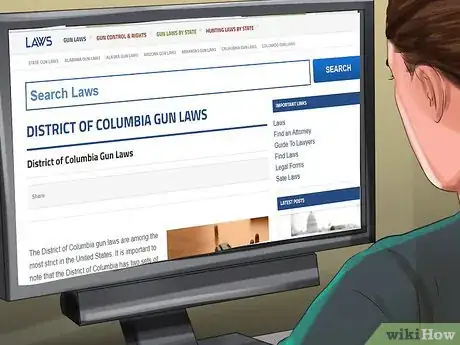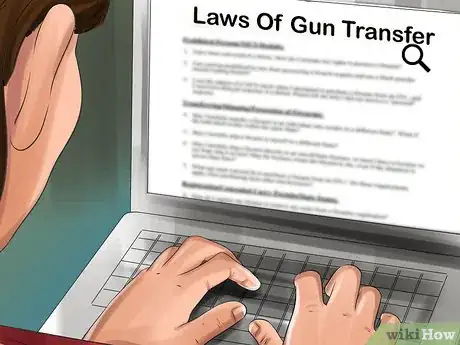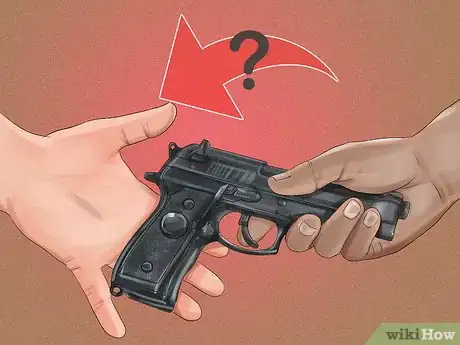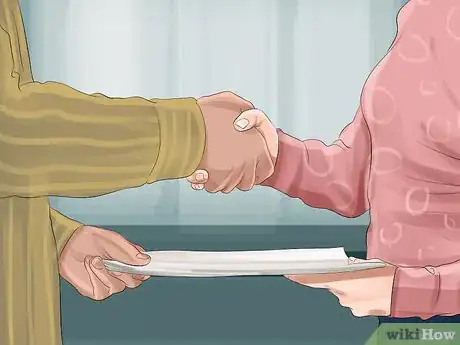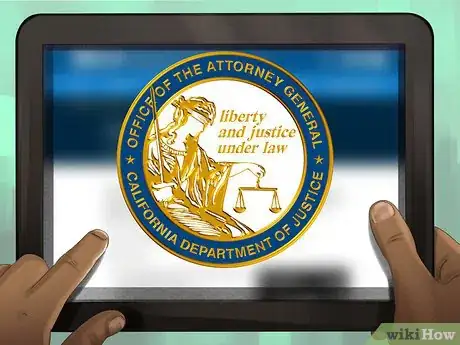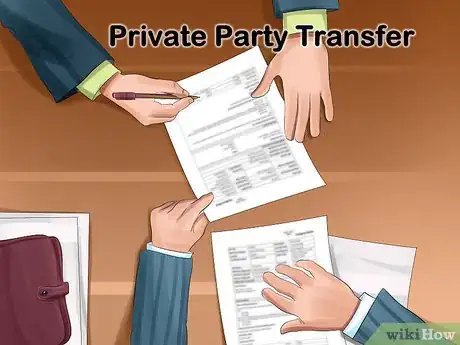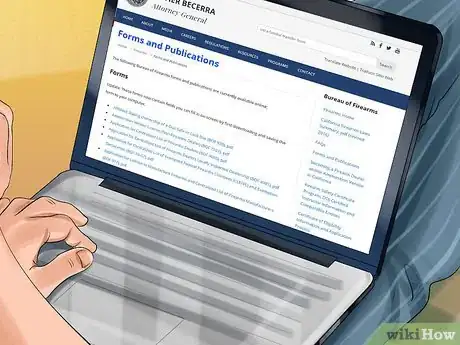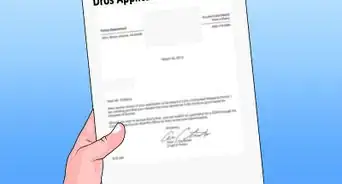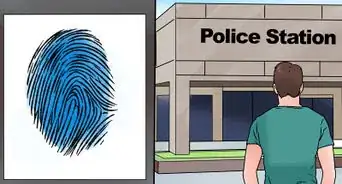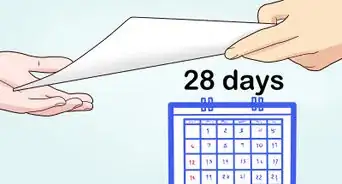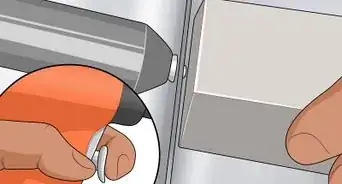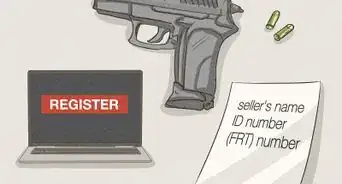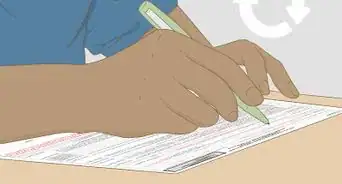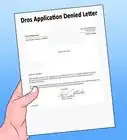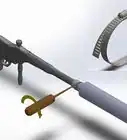This article was co-authored by wikiHow staff writer, Megaera Lorenz, PhD. Megaera Lorenz is an Egyptologist and Writer with over 20 years of experience in public education. In 2017, she graduated with her PhD in Egyptology from The University of Chicago, where she served for several years as a content advisor and program facilitator for the Oriental Institute Museum’s Public Education office. She has also developed and taught Egyptology courses at The University of Chicago and Loyola University Chicago.
There are 11 references cited in this article, which can be found at the bottom of the page.
This article has been viewed 238,525 times.
Learn more...
Gun laws are complicated, and they vary considerably from one place to another. If you live in an area that requires firearm registration, your gun will need to be properly registered before you can transfer it to another person. In many areas, individuals are required to notify local law enforcement if they transfer a weapon to a new owner. Familiarize yourself with gun laws in your area before attempting to sell or give away a firearm. Once you know the law, take steps to ensure that you are making the transfer legally.
Steps
Checking Your Local Gun Laws
-
1Look at federal or national laws regarding firearm registration. Some countries, such as Canada, require most firearms to be registered.[1] In the United States, there is no federal requirement to register most types of firearms, with the exception of machine guns, short-barreled shotguns and rifles, and silencers.[2] In addition to registration laws, there are only a few federal laws governing the transfer of firearms in the US:[3]
- It is illegal for a private individual to transfer a gun directly to a person living in another state. Interstate transfers must be made through federally licensed dealers.
- There are no federal restrictions regarding the transfer of firearms from one private individual to another in the same state, unless the transferee is not legally allowed to own a firearm (e.g., due to being underage or having a criminal record).
-
2Check the local laws in your area. Even if you live in a country that doesn't require firearm registration on the national level, there may be local laws that govern the ownership and transfer of firearms in your province, state, county, or even city. In the US, some states require the registration of some or all types of firearms.[4]
- For example, the District of Columbia and Hawaii require the registration of all firearms, while New York requires the registration of handguns.
- Many states require records to be maintained of all firearm sales or transfers, even if they do not require firearm registration.[5]
- Do a search for information about gun registration laws in your area using terms like “gun registration laws Hawaii” or “firearm registration Chicago.”
-
3Find out what laws govern the type of gun you are transferring. In addition to regional variations, different laws apply to different types of firearms. Check regulations in your area regarding the specific type of gun you would like to transfer.
- For example, if you live in New York State and you wish to transfer a gun that is now classified as an assault weapon, you can only transfer it to someone who resides outside of New York State or to a Federal Firearms Licensed Dealer.[6] You must submit a “Transfer, Disposal, or Loss of a Registered Assault Weapon” form to the New York State Police Pistol Permit Bureau.[7]
-
4Ask your local police department if you have questions. In most places that require registration of firearms or records of firearm transfers, these transactions are processed through local law enforcement. If you're not sure how the law applies in your situation, contact the police in your area and ask them.
- For example, if you live in Hawaii, you might start by visiting the Hawaii Police Department's Firearm Registration website, here: http://www.hawaiipolice.com/services/firearm-registration
- There is detailed information about gun laws in every state in the US on the Giffords Law Center website: http://lawcenter.giffords.org/
- If you live in Canada, information about firearm laws is available through the Royal Canadian Mounted Police Canadian Firearms Program website: http://www.rcmp-grc.gc.ca/cfp-pcaf/index-eng.htm
Transferring Ownership
-
1Make sure the transferee can legally own a gun. Before you sell or give a gun to another person, you are responsible for making sure—to the best of your ability—that there are no legal issues prohibiting their use or ownership of a firearm.[8] While the laws vary considerably from one place to another, a few things you will need to look into include:
- Whether the person is of age to legally own a firearm.
- Whether they need a license or permit to own a gun in your area.
- If the person has a criminal history that may prevent them from legally owning a gun.
-
2File any necessary paperwork with the appropriate government office. Depending on where you live, what kind of gun you are transferring, and to whom you are transferring it, you may need to file a form reporting the transfer to local law enforcement. In some areas, such as the District of Columbia, you must turn in your registration card or certificate to the police after completing the transfer.[9]
-
3Transfer your firearm through a licensed third party, if necessary. In some cases, you may not be able to transfer ownership of a gun directly to another individual. For example, in the US, federal law prohibits the direct transfer of a gun to a person living in a different state. If you want to transfer a gun out of state, you must do so through a Federal Firearms Licensee in the state of the person to whom you are transferring the gun.[10]
- Once the transfer has been made, the transferee is responsible for registering the weapon, if they live in an area that requires registration.
Transferring a Firearm in California (Example)
-
1Find out if your gun is classified as an assault weapon. California requires the registration of assault weapons, which include AK and AR-15 series weapons, SB 23 assault weapons, and .50 BMG rifles. The window for registering most types of assault weapons in California has passed, and unregistered guns must be surrendered to law enforcement or sold to licensed dealers. Assault weapons cannot be transferred from one individual to another in California, even if the gun is registered.[11]
- Bullet button assault weapons can still be registered in California (until June 30, 2018), but cannot be transferred within the state. In order to register your weapon, you must file a report electronically through the California Firearms Application Reporting System (CFARS).
- A bullet button is a device that allows the magazine on a rifle to be removed quickly and easily with the use of a tool (such as a key or the tip of a bullet). Under California law, any gun that does not have a fixed magazine is considered an assault weapon, even if a tool is required to remove the magazine.
-
2Report any handguns that you bring into the state. If you are a new resident of California and have brought a gun with you, you are required to file a report with the California Department of Justice within 60 days. Send a New Resident Report of Firearm Ownership (BOF 4010A) and a $19 registration fee to the California Department of Justice, Bureau of Firearms.[12]
- Alternatively, you may sell your gun to a licensed dealer, sell it to another individual via a licensed dealer, or sell or transfer your gun to a California police department within 60 days.
-
3Make sure the person to whom you are transferring the gun is eligible. A California resident may be restricted from owning a firearm if they have committed a felony or certain other types of crimes or misdemeanors, have been declared mentally incompetent by a court of law, are considered a danger to themselves or others, or have a history of drug addiction.[13]
- If you're not sure whether the person in question is eligible to own a firearm, ask them to request a personal firearms eligibility check from the DOJ. The eligibility check costs $20, and the application can be found here: http://oag.ca.gov/firearms/forms.
- Most people must have a Firearm Safety Certificate (FSC) or Handgun Safety Certificate (HSC) before they can purchase or own a gun in California. Otherwise, they must demonstrate that they qualify for an FSC exception.[14]
-
4Set up a Private Party Transfer (PPT) through a licensed dealer. It is illegal in California for a person who is not a licensed firearms dealer to sell or transfer a gun directly to another unlicensed person. You and the transferee must both fill out Dealer Record of Sale (DROS) paperwork in person at a licensed California dealership. The dealer will hold the gun for a mandatory 10-day waiting period before releasing it to the transferee.[15]
- The transferee will need to provide proof of age, identity, California residency, and eligibility to own a handgun (e.g., a Handgun Safety Certificate).[16]
- You and/or the transferee will need to pay $25 in state fees (to cover the cost of the DROS, background checks, and transfer registry) in order to complete the transaction. Licensed dealers may also charge up to $10 per firearm for facilitating the PPT.
-
5Report transfers between family members to the DOJ. The transfer of firearms between parent and child or grandparent and grandchild are exempt from the law requiring transfer through a licensed dealer. However, familial transfers must be reported using a Report of Operation of Law or Intra-Familial Firearm Transaction (form BOF 4544A). This form must be submitted to the California DOJ within 30 days of the transfer.[17]
- You can download the form for an intra-familial transfer here: http://oag.ca.gov/firearms/forms. You can also submit a report electronically through the California Firearms Application Reporting System (CFARS) website.
- The transferee is also required to have a Firearm Safety Certificate (FSC).
Our Most Loved Articles & Quizzes
Community Q&A
-
QuestionIs it possible to unregister a gun?
 Community AnswerTechnically speaking, no. Registration can only be transferred to another.
Community AnswerTechnically speaking, no. Registration can only be transferred to another. -
QuestionMy boyfriend gave me his gun and he died before he could get it registered to me. What do I do?
 HojnalCommunity AnswerFirst, you need to check with your local police department to see what the firearm transfer laws are. That will determine what you need to do next, typically in most states if it is a rifle or shotgun, there's no registering it or paperwork. If it is a pistol you typically need to file paperwork with your local police department, including a pistol purchase permit. The very first thing to do though is contact your local police department.
HojnalCommunity AnswerFirst, you need to check with your local police department to see what the firearm transfer laws are. That will determine what you need to do next, typically in most states if it is a rifle or shotgun, there's no registering it or paperwork. If it is a pistol you typically need to file paperwork with your local police department, including a pistol purchase permit. The very first thing to do though is contact your local police department. -
QuestionHow do I register a gun from my deceased father?
 MaidCommunity AnswerIt depends in what state you reside in. If you are a part of their will, the guns are yours. If the guns are not in any will, the children can take it without registering in some states, and other states they would have to re-register the weapons into their name.
MaidCommunity AnswerIt depends in what state you reside in. If you are a part of their will, the guns are yours. If the guns are not in any will, the children can take it without registering in some states, and other states they would have to re-register the weapons into their name.
References
- ↑ http://www.rcmp-grc.gc.ca/cfp-pcaf/online_en-ligne/reg_enr-eng.htm
- ↑ http://lawcenter.giffords.org/gun-laws/policy-areas/gun-owner-responsibilities/registration/
- ↑ https://www.atf.gov/file/58681/download
- ↑ http://lawcenter.giffords.org/gun-laws/policy-areas/gun-owner-responsibilities/registration/
- ↑ http://lawcenter.giffords.org/gun-laws/policy-areas/gun-sales/maintaining-records-of-gun-sales/
- ↑ https://www.nysenate.gov/newsroom/press-releases/kenneth-p-lavalle/ny-safe-fact-sheet
- ↑ http://www.governor.ny.gov/sites/governor.ny.gov/files/archive/assets/documents/PPB-12%20.pdf
- ↑ https://www.atf.gov/file/58681/download
- ↑ http://lawcenter.giffords.org/gun-laws/policy-areas/gun-owner-responsibilities/registration/
- ↑ https://www.atf.gov/file/58681/download
- ↑ https://oag.ca.gov/firearms/regagunfaqs
- ↑ https://oag.ca.gov/firearms/ab991
- ↑ https://oag.ca.gov/sites/all/files/agweb/pdfs/firearms/pdf/cfl2016.pdf
- ↑ https://oag.ca.gov/firearms/pubfaqs
- ↑ https://oag.ca.gov/sites/all/files/agweb/pdfs/firearms/pdf/cfl2016.pdf
- ↑ https://oag.ca.gov/sites/all/files/agweb/pdfs/firearms/pdf/cfl2016.pdf
- ↑ https://oag.ca.gov/sites/all/files/agweb/pdfs/firearms/pdf/cfl2016.pdf
- ↑ http://www.rcmp-grc.gc.ca/cfp-pcaf/fs-fd/sell-vendre-eng.htm
About This Article
To transfer a gun registration, check the relevant laws in your local area and make sure the person you’re transferring it to can legally own the gun. Look at the laws in your state to find out what the transfer requirements are, since gun transfers are not usually regulated by federal laws in the US. If you’re struggling to find information about your state’s gun laws, visit your local police station to get advice. Before you transfer the gun, check that the person you’re giving it to is legally allowed to own a firearm, since this is your legal responsibility. For example, they may not be old enough or they may have a criminal record. Once you know the other person is allowed to own a gun, file any necessary paperwork with the government or police and hand over your weapon. Remember that if you’re transferring the gun out of state, you’ll need to go through a licensed third party to complete the transfer. For tips on how to find out the laws concerning different types of guns, such as assault weapons, keep reading!
